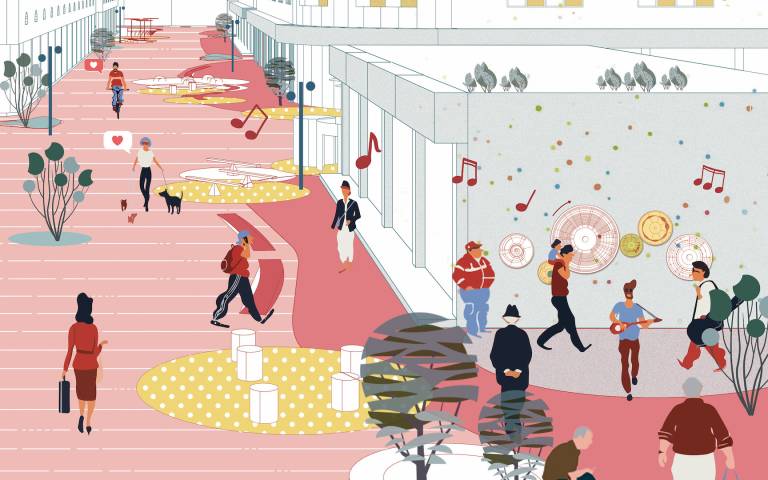 Research
Research

Subject
How does Urban Morphology Mediate Human Activities: Investigating the Impact of Leftover Spaces on Street Walkability
First and second supervisors
Abstract
Car-oriented urbanism has negatively impacted public space, leading to poor walkability and fractured leftover space. With the replacement and transformation of urban spatial functions, leftover spaces continuously appear and disappear. As spaces awaiting formal redevelopment, the leftover space become an alternative type of public space and provide temporary uses for different people, ranging from informal economies and events to artistic and architectural interventions. It is important to look at what happens in the street leftover space, for these activities not only reflect people's needs of urban life, but also constitute spatial patterns and reveal the relationship between pedestrian movement, land use and street connectivity. However, due to its 'leftover' position, little is known about the spatial form of leftover spaces and the spontaneous activities in such places.
This research will focus on understanding leftover spaces and their significance to make cities more walkable, bridging the fields of urban design, spatial analytics and human behaviour research. The assumption of this research is that walking is a context-dependent activity that occurs according to the fine grain of environment, as well as its configurational relations to the larger urban system. I will attempt to understand how morphological features of urban parts can reflect multidimensional human dynamics across scales by analysing the physical conditions of leftover spaces associated with pedestrian movement and human activities in streets and public spaces. Also, I will attempt to provide new insights into how spatial form, social function, subjective perception, and human activities are related by further investigating the human behaviours and interactions within leftover spaces.
Biography
Lian studied Urban Planning and Design in Wuhan, China, and Urban Regeneration in London, UK. Before starting her doctoral research at Space Syntax Laboratory, she has worked in Beijing in both academic and planning industry for five years. Lian’s research focuses on the morphological features of architectural and urban space across scales. She is interested in new methodology and analytical approach to explore how people interact with the built environment physically and culturally, and interdisciplinary design responses to the challenges of future cities.
Publications
Zhang, E., Lei, L., Meng, X., et al. (2021). Urban Design Strategies for Shrinking Cities in China: A Case Study of Hegang Design Studio. Journal of Urban and Regional Planning, 13(1), pp.168-186. (in Chinese)
Long, Y., & Zhang, E., (2020). Fine-Scale Recognition-based Design Guidelines for Dealing with Shrinking Cities: A Case Study of Hegang. In: Data Augmented Design: Embracing New Data for Sustainable Urban Planning and Design. (p. 93-105). Springer: Cham, Switzerland. (the Contributor)
Sousa, S., Pinho, P., Lei, L., & Zhou, K. (2020). Planning for Shrinkage: Paradox or Paradigm. Urban Planning International, 35(02), pp.1-11. (in Chinese)
Image: Diagram of community street design based on human perception and spatial experience, by CHEN Guo, LEI Lian, LIU Chang, LIU Junrui, ZHANG Enjia, 2019
 Close
Close

